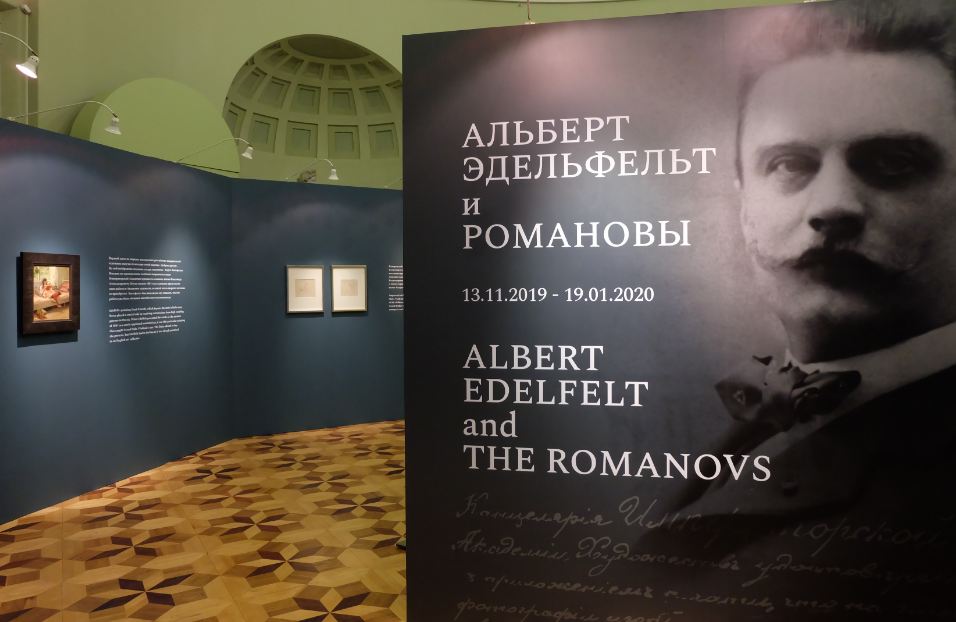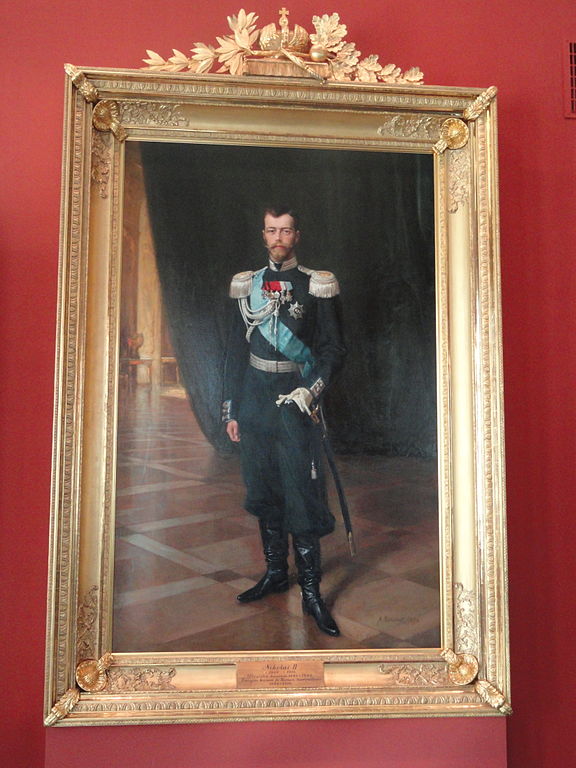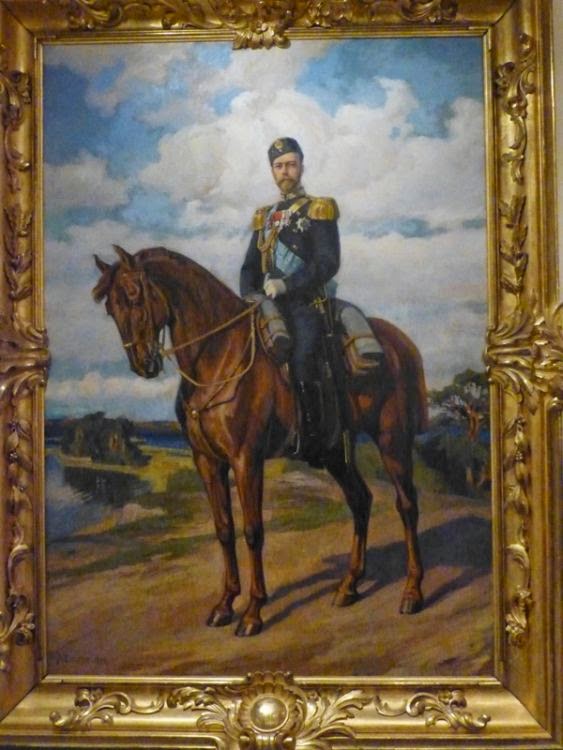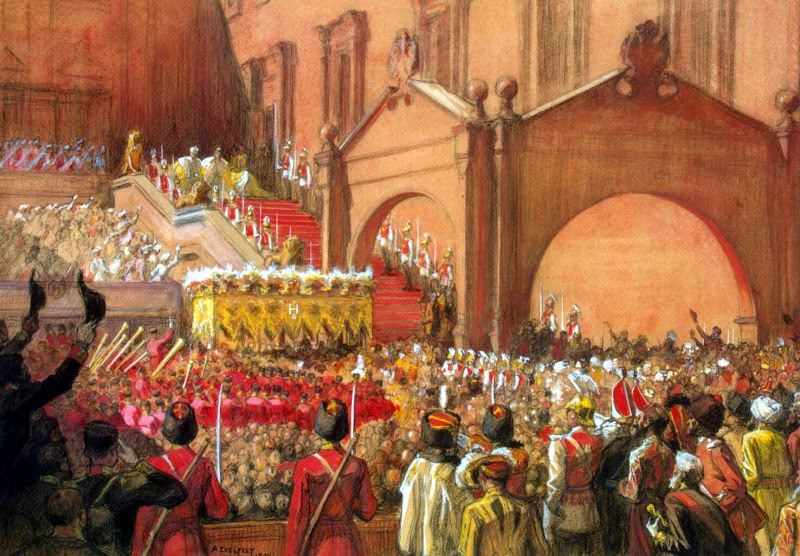
The exhibition ‘Albert Edelfelt and Romanovs’ is now on display in the Imperial Academy of Arts in St. Petersburg, and runs until 19th January 2020
On 14th November 2019, the director of the Institute of Finland in St. Petersburg Sani Kontula-Webb and the Consul General of Finland in St. Petersburg Anne Lammila opened the exhibition ‘Albert Edelfelt and Romanovs’ in the Imperial Academy of Arts in St. Petersburg.
The Institute of Finland in St. Petersburg, together with the Russian Academy of Arts, with the support of the Consulate General of Finland in St. Petersburg, organized the exhibition that will present Edelfelt’s work commissioned by the Russian Imperial Court. His works will be shown for the first time in the former Imperial capital in more than 130 years, including paintings that were previously considered lost.
Albert Gustaf Aristides Edelfelt (21 July 1854 – 18 August 1905) was a Finnish painter noted for his naturalistic style and Realist approach to art. He traveled to Italy, France, England (1878), Spain (1881), Sweden, Denmark and Russia. In 1877, the St. Petersburg Academy of Arts recognized him as an honorary associate, and in 1886 gave him the title of academician for his painting he Funeral of a Child’. He was recognized as a full member of the Imperial Academy of Arts in 1895.
He is known to have had good relations in Russia with the Imperial Family, serving as Court Painter for a period of 15 years. Grand Duke Vladimir Alexandrovich ordered the artist to paint a portrait of his sons Cyril and Boris, followed by a portrait of his youngest son Andrei. At that time, there was a tradition of dressing boys under 7 in dresses. It was believed that children at this age were pure and sinless, like angels and thus gender free. From the age of seven, children were dressed, accordingly in male or female clothes.
It is interesting to note, that in 2017, Edelfelt’s painting, depicting the sons of Grand Duke Vladimir Alexandrovich, was found in the Rybinsk City Museum in Russia. In Finland it was widely believed that the painting had been lost.
Grand Duke Vladimir Alexandrovich, brother of Emperor Alexander III, and his wife Grand Duchess Maria Pavlovna were very pleased with the artists’ work. So was the Empress Maria Feodorovna, who ordered Edelfelt to paint a double portrait of two of her children, 6-year-old Grand Duchess Xenia and 3-year-old Grand Duke Michael.

Portrait of the Grand Duke Michael Alexandrovich and Grand Duchess Xenia Alexandrovna, 1882. Artist: A. Edelfelt (1854-1905)
Edelfelt was officially introduced to Empress Maria Feodorovna in December 1881. The empress invited the artist to live in Gatchina, where he began work on the portrait of her children in early January 1882.
Alexander III commissioned Edelfelt to paint a number of paintings which would decorate Gatchina Palace, and Anichkov Palace in St. Petersburg.
In 1895, the painter was invited to St. Petersburg for 2 weeks by the now widowed Dowager Empress Maria Feodorovna. The following year, Edelfelt received orders for portraits of the new emperor Nicholas II. Typically, such portraits were painted from photographs, but the artist really hoped that the emperor would personally agree to pose for him.
His wish came true. On 13th March 1896, he wrote to his mother: “Despite the fact that today is Friday the thirteenth, my day was happy because I completed the sketch and was able to visit the palace on time. I have already forgotten how luxurious and representative the Russian Court is. I was met by Grand Duke Alexander Mikhailovich, the husband of Grand Duchess Xenia, who said that the tsar would be arriving soon. I laid out my sketches in the billiard room and soon arrived the tsar, who was very natural and agreed to pose in the place I requested him to. He sat for an hour and, upon leaving, promised several sessions the following week.”

Portrait of Emperor Nicholas II. 1896. Arppeanum, Helsinki.
Artist: A. Edelfelt (1854-1905)
Albert Edelfelt was to paint the official portrait of the emperor in Peterhof, for the Imperial Library in Helsinki. The artist said that from their very first meeting, he was impressed by the natural friendliness of the young tsar. “He seems very European. He has his mother’s eyes, which I noted to him. He well remembers Gatchina and the way I painted there, all of my paintings belong to his parents . . .
“The tsar gave me a task (of course, regarding painting), which is the highest honour for me, but His Majesty asked me to keep it a secret. So, I won’t say a word about this. I can’t understand how this young and well-educated officer, who was sitting with me together in the billiard room, talking and smoking, could be the monarch of more than eighty million Russian people and the Grand Duke of Finland, etc. That he is the greatest monarch in the world.”
Edelfelt nevertheless revealed the secret in the next letter (March 28, 1896). “The fact is that the second portrait, which I am working on now, was ordered by the tsar himself. He only asks me not to tell who will receive it, so I won’t say yet. He really likes the portrait, and he enjoys looking at it.”
The whereabouts of this portrait remains unknown to this day, its description: “The portrait of Nicholas II (1896, approximately 75 × 55 cm), the emperor is depicted in a gray knee-length caftan, in the background there is a tapestry, which was made according to the drawings of Walter Crane. The emperor is depicted waist-high, in full size. The painting was presented as a gift to Empress Alexandra Feodorovna, who hung it in one of her rooms in the Alexander Palace in Tsarskoye Selo.”

Equestrian portrait of Emperor Nicholas II. 1896. National Museum of Finland in Helsinki. Artist: A. Edelfelt (1854-1905)
Nicholas II liked Edelfelt’s sketch for a portrait intended for the University of Helsinki, and he invited the artist to come to Tsarskoye Selo to capture the interior. The emperor also invited Edelfelt to visit the Imperial stables to select a horse for a portrait of the tsar on horseback (for the Senate of Finland) in the uniform of a dragoon regiment.
This portrait, practically unknown in Russia, today hangs in the National Museum of Finland in Helsinki.

Solemn procession of Emperor Nicholas II on the Red Porch. Coronation in Moscow, 14 May 1896.
Artist: A. Edelfelt (1854-1905)
In March 1896, Edelfelt received an invitation from the vice-president of the Academy of Arts, Count I. Tolstoy, to join the delegation of representatives of the Academy at the coronation of Nicholas II in Moscow on 14th May. Russian and foreign artists were invited to the ceremony, and various places in the Kremlin were allocated for them, from where they captured the historic event. Albert Edelfelt was outside the Cathedral and wrote the following coronation procession:
“When the tsar came close enough so that I could depict him (about 20-30 steps away from me), I must say that I felt some sympathy for him – the crown looked so big, so heavy: it was made of sparkling stones! The long mantle supported by the chamberlains also looked huge.
“The emperor himself looked a little pale and determined. Then I first understood what they mean when they talk about the weight of the crown. I was awakened by sympathy for him as a person, and at that moment I felt sorry for the young ruler, who now bore the whole great state on his shoulders. Gustav Mannerheim walked in front of the imperial canopy with a brilliant sabre and looked very noble and elegant – an excellent view! ”
Albert Gustaf Aristides Edelfelt died on 18th August 1905 in Borgo, Grand Duchy of Finland.
The exhibition ‘Albert Edelfelt and Romanovs’ is now on display in the Imperial Academy of Arts in St. Petersburg, and runs until 19th January 2020
© Paul Gilbert. 14 November 2019


You must be logged in to post a comment.